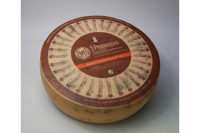Starring in this increased productivity plan is Dannon’s 336,000-square-foot Minster, Ohio, processing plant where 400 plant associates make more than 100 SKUs of Dannon’s spoonable and drinkable yogurts including Activia, DanActive, Light & Fit, All Natural and Danimals products.
“This plant has always been the biggest one in North America,” says John St. Clair, the plant’s quality and food safety manager.
But the plant’s sheer size once allowed Dannon executives to overlook other shortcomings.
St. Clair continues, “As compared with [other Dannon North American plants], the bar for operational performance wasn’t very high. So while we always considered ourselves the best in the U.S., we didn’t compare well when benchmarked against some of the operational performance indicators of our sister plants throughout the world.”
Things have come a long way in the past three years, and the Minster plant has become a crucial piece of Dannon’s manufacturing network that includes three facilities strategically located nationwide.
“Through investment, we have renewed about one-third of the capacity of the plant while also increasing overall capacity,” says Plant Director Didier Menu. He credits a dedicated work force for helping the facility reach its full potential. “The changes are bringing benefits. It is of course always challenging, but the team here now believes in our continuous improvement program.”
One change, Menu says, is increased automation. Equipment that was purchased or revamped over the last five years now accounts for about a third of the plant’s present capacity. One example is Minster’s use of automatic guided vehicles (AGVs) at the end of a quart-tub yogurt packaging line. The AGVs are part of a drive to refocus the manpower in Minster’s packaging lines to improve productivity. One line installed last summer is on its way to one operator between the filler and the palletizer, and others could follow.
Teamwork will be the key to accomplishing this goal.
“To have one person per line, you need to have an operator like a race car driver,” Menu notes. “However, that operator needs a high-performance support team helping them.”
Officials say the Minster plant also is becoming more effective when it comes to processing waste. The plant opened a new wastewater pretreatment facility in 2007 that cleans water before it’s discharged, and offers some waste to local farmers for hog feed.
Moving the wastewater facility cleared space for a new utility building, which will be completed this spring. The new building will house a new, more energy efficient boiler, compressed air equipment and other utilities to serve the plant.
As the plant grows - in size and production capabilities - food and worker safety also are a key focus area, St. Clair says.
The Ohio Department of Agriculture makes quarterly inspections of equipment at the Minster plant, which - coupled with Dannon’s own aggressive internal audits - ensures a high degree of food safety.
In addition, in 2007 Minster launched a new safety program that got more employees involved in the process and by mid-year 2008, there had been half the amount in 2007. Plant managers offer refresher courses on various safety aspects throughout the year, and discuss safety at monthly plant-wide business and performance meetings.
Another recent endeavor has Dannon working to reduce the use of milk from cows treated with recombinant bovine somatropin (rBST), a synthetic hormone that has been approved and declared safe for use by the FDA. In response to consumers’ vocal preference for “rBST-free” dairy products, Dannon officials now use nearly 80 percent rBST-free milk in yogurt formulation. By the third quarter of 2009, officials say all products processed at Minster will be rBST-free.
The significant changes Minster has seen so far have Menu feeling optimistic about the future.
“The challenge was to get people involved with the new plan. I can [now] say I believe we are getting there,” he says. “But if we had met [early last year], I would have said, 'This is our plan, but I'm not quite sure.' But people are starting to see that all these changes are bringing benefits. They are starting to believe in our plan and the results are showing.”
Editor’s note: This article has been adapted from Dairy Food’s June 2008 story, “A Sleeping Giant Awakens.” DFis a sister publication to Refrigerated & Frozen Foods.
Fueled by probiotics
When Dannon officials set out to increase productivity two-fold in 2006, it was Dannon’s Activia brand – valued at nearly $2 billion in global sales – that was doing most of the pushing.Its launch in the U. S. two-and-a-half years ago was one of the most successful new food product introductions in history; Dannon’s annual U.S. sales surpassed $1 billion in 2007. Activia, and the DanActive cultured beverage launched not long after, establishing a new beachhead in the United States for probiotics, setting the tone for Dannon’s aggressive development of the category.
“Suddenly these two brands that didn’t exist 27 months ago are about 40 percent of our total business,” says Juan Carlos Dalto, president and chief executive officer. “These two brands are transforming the way people view the yogurt market. They’re helping us to transform the shelf, which is one of our key obsessions. Clearly, we have been adding value in a tough time for the dairy industry.”
Dannon has since followed up with light versions of both products; launched a 0% Plus version of Light & Fit, its former highest-volume product; and enhanced its kids’ offerings, including a proprietary probiotic culture for the Danimals line.
Just the Facts
Company:The Dannon Co.Food plant(s) honored: Minster, Ohio
Selection criteria: Process/Packaging Innovation, Productivity
Employees: 400
Facility size: 336,000 square feet
Products: More than 100 SKUs of spoonable and drinkable yogurts.


